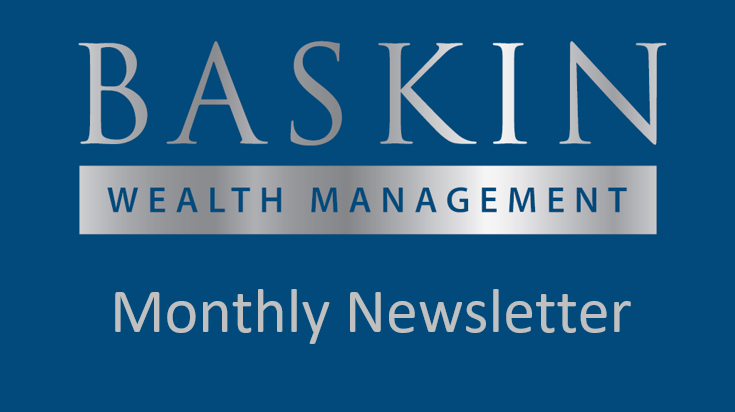How high can we go?
After a slow start to the year, the spring and summer months brought our clients hot weather and even hotter returns. Many of our largest positions hit all-time highs in August, including Apple, Alphabet, Constellation Software, Microsoft, TFI International and National Bank, to name just a few. Over the past few weeks, we received several emails and calls from clients offering kind words about their year-to-date performance. At the same time, many are asking, “How much higher can the markets go? Shouldn’t we be looking to take profits?”. These are natural and good questions to ask, especially after several very good years in a row. But as we know, stock markets are forward looking, and, as we look forward, we find several reasons to remain optimistic.
In our July newsletter, David Baskin made the case that good earnings drive good returns. We are pleased to report that many of the companies in our portfolio are delivering record earnings. Many would be surprised to hear that stocks are actually cheaper today than they were at the beginning of the year as a result of strong earnings reports and the expectation for continued earnings growth. According to consensus estimates, earnings for the companies that comprise the S&P 500 are expected to grow by 45% in 2021. Even with the S&P 500 being up 22% this year, stocks have underperformed earnings. Forecasters see further gains in earnings of 7% in each of 2022 and 2023. If this is the case, stock prices should eventually follow higher.
The level of interest rates is another important factor to consider when discussing stock prices. When owning any asset, including stocks, one must consider the potential returns they would get from other competing asset classes. The benchmark for this discussion is called the risk-free rate. This is the interest rate you would get if you owned an asset class that had zero risk of defaulting. The most commonly referenced risk-free asset is the 10-year U.S. government bond. This bond currently pays an interest rate of 1.3%. If you bought this bond today, you would get paid 1.3% annually for the next 10 years. This is a very unattractive return, especially when you consider that the 1.3% is before fees, taxes and inflation. Even if the 10-year bond were to a pay a yield that was double its current rate, interest rates would still be extremely low.
It is also important to consider the current make-up of the companies that dominate the S&P 500 Index. The S&P 500 is filled with enormously profitable companies, like Apple, Alphabet, Amazon, Microsoft, Facebook, Nvidia, Visa, PayPal, Adobe, Mastercard, Netflix and Salesforce. These are companies that have recurring revenue streams, tremendous profit margins, generate enormous free cash flows and have business models that reach billions of customers. It is hard to imagine that these companies will lose their dominance in the medium term.
In our opinion, the fundamentals of the North American economy appear to be very healthy, and we expect further improvement as we move into 2022. First, we expect the unemployment rate in the U.S. to return to pre-COVID levels by next summer. As pandemic benefits start to roll off many of the unemployed will return to work. At the end of June, there were over 10M job openings in the U.S.—the highest level ever recorded. Second, U.S. households are sitting with record levels of net worth, and there is an enormous pent-up demand for goods and leisure activities by U.S. consumers. Third, inventories in North America are remarkably depleted. For example, if you want to buy any new appliance for your kitchen, expect to wait many months. The world is in short supply of stainless steel, rubber, semiconductor chips, container space to ship the goods from China and, of course, truck drivers to deliver these goods to your homes. Finally, the North American banks are awash in liquidity; they have too much cash, which should improve their lending capacity. When lending capacity increases, it encourages household and business formations.
The last few years have delivered wonderful returns for our clients. Eventually, we will have a market correction and the drop may be as bad as the ones we experienced in late 2018 or March of 2020. We can never know the timing or the magnitude of any market correction. We believe the best way to prepare for the impact of a market downturn is to stick with high quality investments and to never chase today’s new investment fads. Over the long-term we are confident that our companies will continue to compound our client’s returns.
Barry Schwartz
Blogs
- An Ernest Opinion – August 25,2021
Media Appearances
- Barry Schwartz on BNN – August 5, 2021
Interesting Reads
Thoughts about the labour market throughout COVID
A guide to China’s tech crackdown


